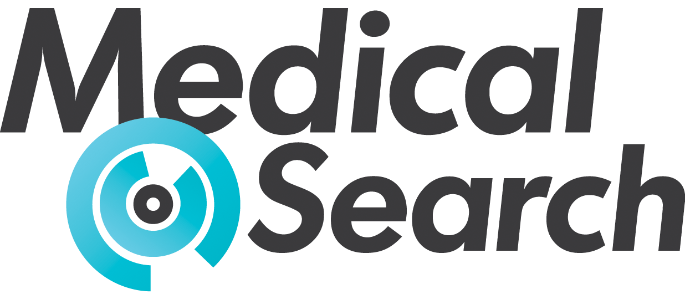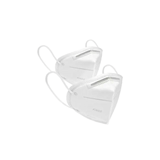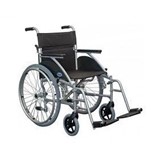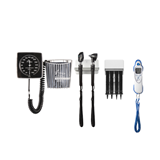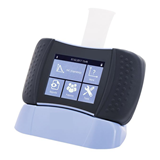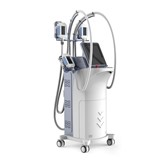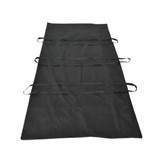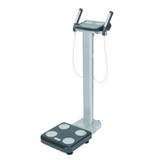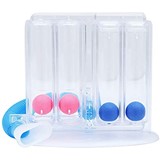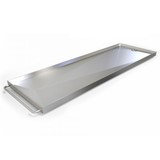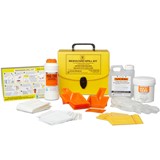Buying body contouring devices in Australia? Discover essential TGA compliance rules, how to verify ARTG approval, operator training obligations, and tips to stay fully compliant and protected.
Key takeaways
- TGA registration is mandatory: All body contouring devices marketed or supplied in Australia must be listed or registered on the Australian Register of Therapeutic Goods (ARTG) by the Therapeutic Goods Administration (TGA).
- Risk classification determines regulatory pathway: Most body contouring machines (e.g. cryolipolysis, radiofrequency, ultrasound) are Class IIa or IIb medical devices under the TGA’s classification system.
- Hefty penalties for non-compliance: Selling unapproved medical devices can result in fines of up to $888,000 for individuals and $4.44 million for companies under the Therapeutic Goods Act 1989.
- Training requirements are rising: Clinics using these devices must ensure operators complete nationally recognised training, particularly when devices pose moderate to high risk.
- Suppliers must be transparent: Reputable suppliers should provide ARTG number, device classification, and post-market surveillance information.
- Importers beware: Devices purchased from overseas may not be TGA-compliant even if they have FDA or CE approval—TGA approval is not automatic.
- Common compliance failures include mislabelling, inadequate instructions for use, and devices promoted for therapeutic claims without proper classification.
Introduction
As Australia’s aesthetic market continues its rapid growth—reaching an estimated $1.4 billion in non-surgical treatments annually—the body contouring sector has become a significant part of the industry. Devices such as cryolipolysis (fat freezing), radiofrequency (RF) tightening, and ultrasound-based fat reduction have surged in popularity, but so too has regulatory scrutiny.
If you're planning to purchase a body contouring device in Australia, understanding Therapeutic Goods Administration (TGA) compliance is crucial. This guide outlines how to ensure the equipment you buy meets Australian medical regulations, the safety standards you need to follow, training obligations, and what to look for when comparing devices or suppliers.
What is TGA compliance and why does it matter?
The Therapeutic Goods Administration (TGA) is the Australian regulatory body responsible for ensuring the safety, quality, and efficacy of medical devices and therapeutic goods supplied in Australia.
What makes a body contouring device a "medical device"?
Many body contouring machines fall under the definition of a medical device if they:
- Alter the structure or function of the body (e.g. reduce fat, tighten skin)
- Make therapeutic claims (e.g. cellulite reduction, fat reduction)
- Use energy-based technology such as ultrasound, RF, or cryolipolysis
In these cases, they must be:
- Registered or included on the Australian Register of Therapeutic Goods (ARTG)
- Compliant with the Essential Principles under the Therapeutic Goods (Medical Devices) Regulations 2002
- Properly classified by risk level (Class I – Class III)
Comparing body contouring device types by TGA risk classification
When purchasing a body contouring device in Australia, it's important to understand how the Therapeutic Goods Administration (TGA) classifies different technologies based on their level of risk and intended use. The classification affects the level of compliance documentation, safety testing, and evidence required before the device can be legally supplied or used.
Below is a breakdown of common body contouring technologies and their likely TGA classification:
Cryolipolysis (Fat Freezing)
- Technology used: Controlled cooling to freeze and destroy fat cells
- Common claims: Spot reduction, localised fat loss
- TGA classification: Typically Class IIa
- Compliance considerations: The device must demonstrate precise temperature control mechanisms and evidence of safety to avoid skin damage or frostbite.
Radiofrequency (RF) Skin Tightening
- Technology used: Radiofrequency energy to heat the dermis
- Common claims: Skin lifting, wrinkle reduction, collagen stimulation
- TGA classification: Generally Class IIa
- Compliance considerations: Devices must not overheat tissue, and must include proper temperature regulation and shut-off features to reduce the risk of burns.
Ultrasound Cavitation
- Technology used: Low-frequency ultrasound waves to break down fat
- Common claims: Non-invasive fat emulsification and body shaping
- TGA classification: Class IIa or IIb, depending on intensity and depth of penetration
- Compliance considerations: Requires evidence that the acoustic energy is safe for targeted tissues, with no harmful side effects like bruising or organ damage.
High-Intensity Focused Ultrasound (HIFU)
- Technology used: Highly focused ultrasound beams targeting deep layers
- Common claims: Non-surgical face lifting, fat melting, skin tightening
- TGA classification: Typically Class IIb
- Compliance considerations: Devices must undergo more rigorous safety and performance validation, particularly around energy delivery, depth of penetration, and thermal effects on skin and tissue.
How to verify if a device is TGA-approved
Before buying a device, ask the supplier for:
- ARTG inclusion number
- Manufacturer details and GMDN code
- Instructions for use (IFU)
- Classification letter from the TGA
- Evidence of post-market surveillance or recall history
To verify yourself:
- Visit the Australian Register of Therapeutic Goods search page.
- Enter the ARTG number or product name.
- Confirm device classification and sponsor.
If a supplier refuses or hesitates to provide ARTG details, that’s a red flag.
Understanding compliance responsibilities: importers, suppliers, and clinics
For importers and suppliers
- Ensure ARTG inclusion before advertising or selling in Australia.
- Provide technical documentation, labelling in English, and post-market monitoring procedures.
- Appoint a TGA-recognised sponsor if not locally based.
For clinic owners
- Always confirm TGA approval before purchase.
- Keep a record of device manuals, ARTG documentation, and any adverse event reports.
- Ensure staff receive proper device-specific training, ideally through accredited providers (e.g. TAFE or RTOs with medical aesthetics modules).
Training and safety: who can operate these machines?
TGA compliance doesn’t end with the device—it extends to how it's used.
Training essentials:
- Operators must be trained in device handling, contraindications, emergency shutdown, and post-treatment care.
- Consider enrolling staff in a Certificate IV in Beauty Therapy or more advanced aesthetic laser and IPL safety courses.
Tip: Insurance providers increasingly require evidence of device training as part of coverage eligibility.
Warning signs: spotting non-compliant or dangerous machines
Be wary of suppliers who:
- Do not list an ARTG number or falsely claim “TGA Approved” (this term is discouraged by the TGA).
- Promote off-label uses (e.g. treating medical conditions not listed in device scope).
- Offer “generic” or unbranded imports that lack labelling or usage instructions.
- Rely on FDA or CE markings alone, which are not valid in Australia.
Regulatory enforcement and penalties
Selling or using a non-compliant medical device in Australia can result in:
- Civil penalties: Up to $888,000 for individuals, and $4.44 million for corporations.
- Criminal prosecution for reckless supply or advertising of unapproved therapeutic goods.
- Mandatory recall or destruction of unsafe equipment.
Best practices for TGA-compliant buying
Choose a reputable supplier who:
- Provides clear documentation, including ARTG number
- Offers operator training or partners with accredited RTOs
- Has a local support office for technical and compliance queries
Conduct due diligence:
- Search the TGA database yourself
- Request product specifications and safety certifications
- Consult a regulatory consultant if unsure
Insurance implications: how non-compliance can void your cover
Using a body contouring device that isn’t TGA-approved doesn’t just risk regulatory penalties—it can also void your insurance. This is a critical but often overlooked issue for aesthetic clinics in Australia.
Why insurers require TGA compliance
Most Australian insurers offering public liability and professional indemnity policies require that:
- Devices are listed on the ARTG
- Equipment is used within its approved purpose
- Operators have appropriate training and qualifications
Devices that aren’t TGA-listed—regardless of FDA or CE approval—may be considered outside policy terms. If a client is injured, your claim could be denied.
Real-world risks
Several clinics have had insurance claims rejected due to non-compliant equipment. Common consequences include:
- Claim denials after burns or adverse reactions
- Policy cancellation upon audit
- Legal settlements exceeding $100,000
- Loss of licence or operational restrictions
Even if the device isn’t the direct cause of harm, its unauthorised use may still invalidate your cover.
How to ensure you're protected
- Confirm the device is listed on the ARTG
- Notify your insurer of all new devices
- Keep records of ARTG details and supplier documents
- Maintain training records for all users
- Avoid grey market or second-hand devices unless fully verified
If in doubt, request written confirmation from your insurer that a specific device is covered under your policy. Never assume supplier claims equate to insurance approval.
FAQs: TGA compliance for body contouring devices
1. Is TGA approval required for cosmetic devices?
Yes, if the device makes therapeutic claims or alters bodily function or structure. That includes fat freezing, RF tightening, and ultrasound cavitation.
2. Can I use a CE- or FDA-approved device in my clinic?
Not unless it is also listed on the ARTG. TGA compliance is mandatory for legal supply in Australia, regardless of overseas certifications.
3. How do I report a non-compliant device?
You can report unapproved or faulty devices to the TGA via the Device Incident Reporting portal.
4. What happens if I use an unapproved device in my clinic?
You may face significant fines, risk insurance cancellation, and be subject to device confiscation. Clients harmed by the device may also seek legal action.
5. What kind of training should my staff have?
Training should include:
- Manufacturer-led or RTO-accredited instruction
- CPR and emergency first aid
- Skin anatomy and physiology
- Contraindications and client consultation protocols
Final thoughts
Purchasing a body contouring device in Australia is more than a cosmetic investment—it’s a regulatory obligation. With the TGA enforcing strict safety and compliance rules, it’s vital to:
- Ensure your device is listed on the ARTG
- Verify classification, documentation, and usage parameters
- Prioritise operator training and consumer safety
Taking the time to get compliance right protects not only your clinic and clients—but also your reputation, finances, and legal standing.
For a list of verified body contouring suppliers with TGA-compliant listings, or a tailored checklist to help you assess suppliers, get in touch with our procurement advisors today.
